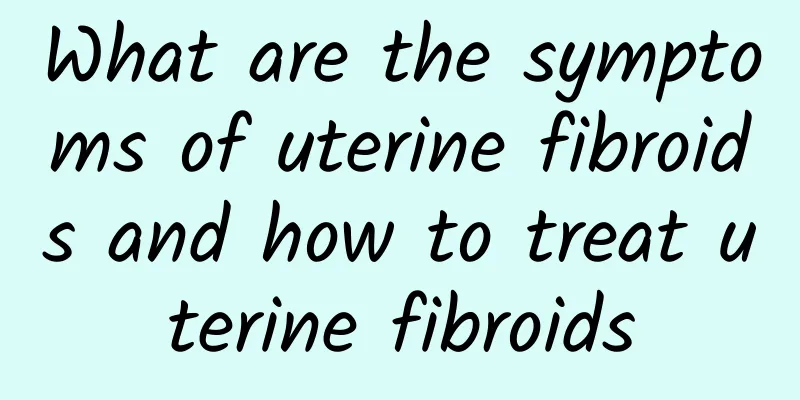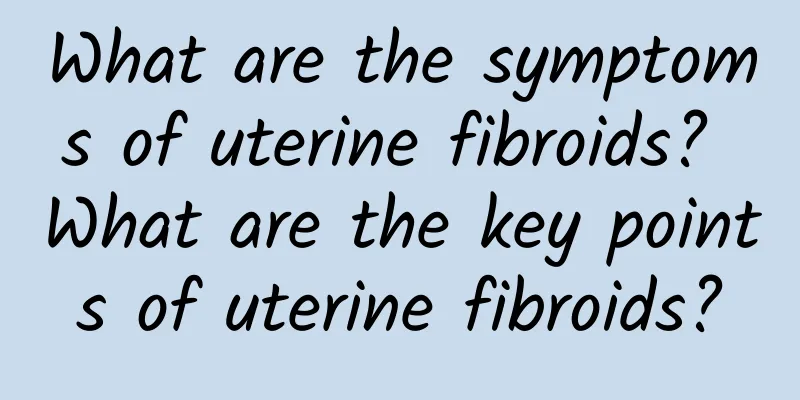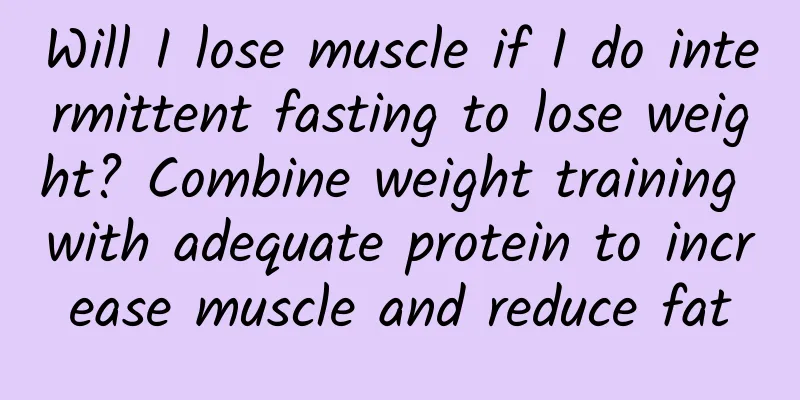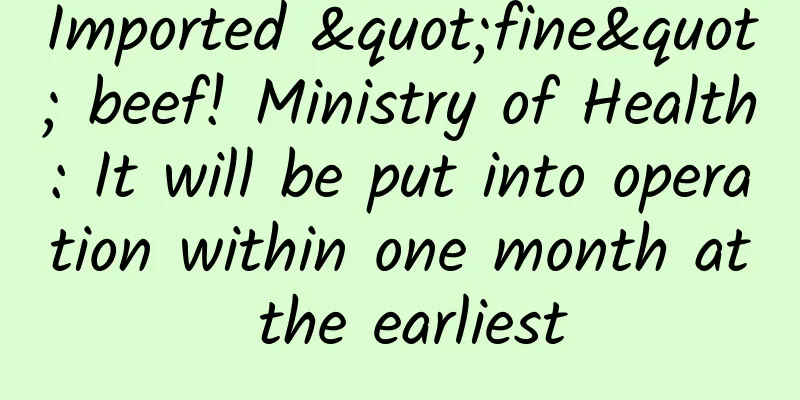What are the symptoms of uterine fibroids and how to treat uterine fibroids

|
The uterus is the place where the fetus is conceived. If there is a mass, it will inevitably affect the growth and development of the fetus. Uterine fibroids are very common in clinical practice. As a common disease and common disease in women, uterine fibroids have caused a certain degree of harm to women's lives and health. In view of several questions that outpatients often ask, the author wrote this article for everyone to read. What causes uterine fibroids? The cause of uterine fibroids is still unclear, and was initially thought to be related to estrogen. Estrogen is the main factor that promotes the growth of fibroids, and research results show that the amount of estrogen receptors in fibroid tissue is greater than that in normal tissue. From the perspective of traditional Chinese medicine, organ dysfunction, qi stagnation and blood stasis, and qi and blood disorders are the root causes of uterine fibroids. Generally speaking, pregnant women have strong ovarian function and more estrogen secretion, which further increases the risk of uterine fibroids. Relatively speaking, the ovarian function of menopausal women gradually declines, estrogen secretion decreases, and fibroids gradually shrink. What are the clinical symptoms of uterine fibroids? ① Vaginal bleeding: Vaginal bleeding is the most common clinical manifestation of uterine fibroids, but due to the different growth sites of fibroids, different degrees of vaginal bleeding are also manifested. According to the different growth sites, uterine fibroids are divided into subserosal uterine fibroids, intramural uterine fibroids and submucosal uterine fibroids. Subserosal uterine fibroids account for 20% of uterine fibroids, and patients have no symptoms of vaginal bleeding; intramural uterine fibroids are the most common uterine fibroids clinically, accounting for 60%-70%. If it develops to a certain size, it will affect uterine contraction, and may also increase the area of the endometrium, prolonging menorrhagia or menstrual period; long-term menorrhagia will lead to secondary anemia. ② Abdominal mass: When uterine fibroids develop to a certain extent, the patient's abdomen will bulge. When the fibroids are relatively large or the patient is thin, it is easier to find. Most people can feel the mass when lying flat. If the patient is obese, it is not easy to feel the mass, so it is often ignored. ③ Increased leucorrhea: Increased leucorrhea is more common in submucosal fibroids. When the fibroids are separated from the cervix or vaginal opening, when the uterus or cervical submucosal fibroids ulcerate, become infected, or become necrotic, bloody leucorrhea will be produced, and when infection occurs, purulent leucorrhea will result. ④ Compression symptoms: When uterine fibroids grow to a certain extent, they will cause compression of surrounding organs such as the bladder, rectum, ureters, pelvic blood vessels, and lymphatic vessels. When compressing the bladder, patients usually experience frequent urination, urgency, and even urine retention; if compressing the rectum, uterine fibroids will cause constipation and discomfort during defecation; if compressing the ureters, it will cause hydronephrosis; if compressing the pelvic blood vessels and lymphatic vessels, it will cause lower limb edema. ⑤ Pain: When uterine fibroids are relatively small, most patients do not experience pain, only lower abdominal swelling and back pain. If the fibroids over-compress the nerves or the fibroid pedicles twist, it will cause severe pain. ⑥ Secondary anemia: Anemia is caused by long-term bleeding. In severe cases, systemic symptoms such as fatigue, pale face, palpitations, and shortness of breath may also occur. Severe anemia is common in patients with submucosal myomas. ⑦ Malignant lesions: Although uterine fibroids are benign tumors, a small number of people may develop malignant lesions. Although the probability is only 1%, once fibroids are found, they should be monitored in time and should be taken seriously. ⑧Infertility: Due to the different growth locations, sizes, shapes and numbers, uterine fibroids can compress the fallopian tubes and twist them, hindering the implantation of the fertilized egg and leading to infertility; even if pregnancy occurs, the possibility of miscarriage is very high. Fibroids can affect the implantation of the fertilized egg and the development of the placenta, leading to placenta previa, placental abruption and placental adhesion, leading to miscarriage. 3. What should I do if I find uterine fibroids after pregnancy? Under normal circumstances, uterine fibroids will accompany pregnant women until delivery. Some pregnant women with uterine fibroids will have symptoms such as fever, abdominal pain, uterine contractions, and then need to go to the hospital for treatment. Generally, cesarean section is not recommended for pregnant women with uterine fibroids due to fetal position, weight, and maternal pelvis, because the uterus must have a wound during cesarean section, which increases the risk of endometriosis and adhesion of peritoneal organs in the pelvic cavity. Pregnant women who are found to have uterine fibroids after pregnancy do not need to worry too much. They should go to the hospital for regular pregnancy checkups as required, avoid moderate or above physical labor, and maintain a good psychological quality. 4. What kind of uterine fibroids can be treated surgically? Uterine fibroids enlarge and exceed the third month of pregnancy; uterine fibroids compress the bladder and rectum; uterine fibroids cause irregular bleeding; acute abdominal pain, pedicle torsion or uterine fibroid degeneration; uterine fibroids in special locations, such as cervical fibroids and broad ligament fibroids; uterine fibroids cause infertility. Experts say: uterine fibroids scare many women, but there are also many women who have no basis for it. Not all uterine fibroids require surgical treatment. Comprehensively evaluate the patient's age, fertility requirements, fibroid location, size, nature, number, symptoms and development. |
<<: What are the causes of uterine fibroids? Which women are more likely to get uterine fibroids?
>>: What medicine is good for uterine fibroids? How to use medicine for uterine fibroids
Recommend
Maternal and Child Health Hospital Abortion Price List
The price list of abortion in maternal and child ...
Is there still a chance of pregnancy if ovulation stops with premature ovarian failure?
Is there still a chance to get pregnant if ovulat...
Three ways to check for uterine fibroids
Uterine fibroids are a relatively common benign g...
What should I do if my menstruation comes early after uterine fibroid surgery? Will uterine fibroids recur after surgery?
Uterine fibroids are common benign tumors in gyne...
Does bacterial vaginosis affect menstruation?
Will bacterial vaginosis cause irregular menstrua...
Exercise can be sexy! The most fascinating weight loss exercise: Zumba
Although the famous Taiwanese female artist Xiao ...
Five ingredients of the Qingming Runbing were not up to standard
Next week is Qingming Festival, and spring rolls ...
Which one is less harmful, medical abortion or surgical abortion?
Pregnancy is a good thing for some people, but it...
What symptoms will irregular menstruation cause?
Irregular menstruation is a problem that many wom...
What are the hazards of endometrial tuberculosis to patients?
In life, women are more susceptible to diseases t...
Pay attention to three details when bacterial vaginosis occurs
The most common cause of bacterial vaginosis is t...
How does Gongjingyankang suppository treat cervical erosion? Methods of traditional Chinese medicine to treat cervical erosion
Cervical erosion is a common disease among women....
12 Angel supermodels love Pilates for weight loss
As the 2012 Victoria's Secret Fashion Show co...
Why do ovarian cysts occur?
Generally speaking, there are many causes of ovar...
Clinical nursing care for pregnancy complicated with hyperprolactinemia
What should be paid attention to in the clinical ...









